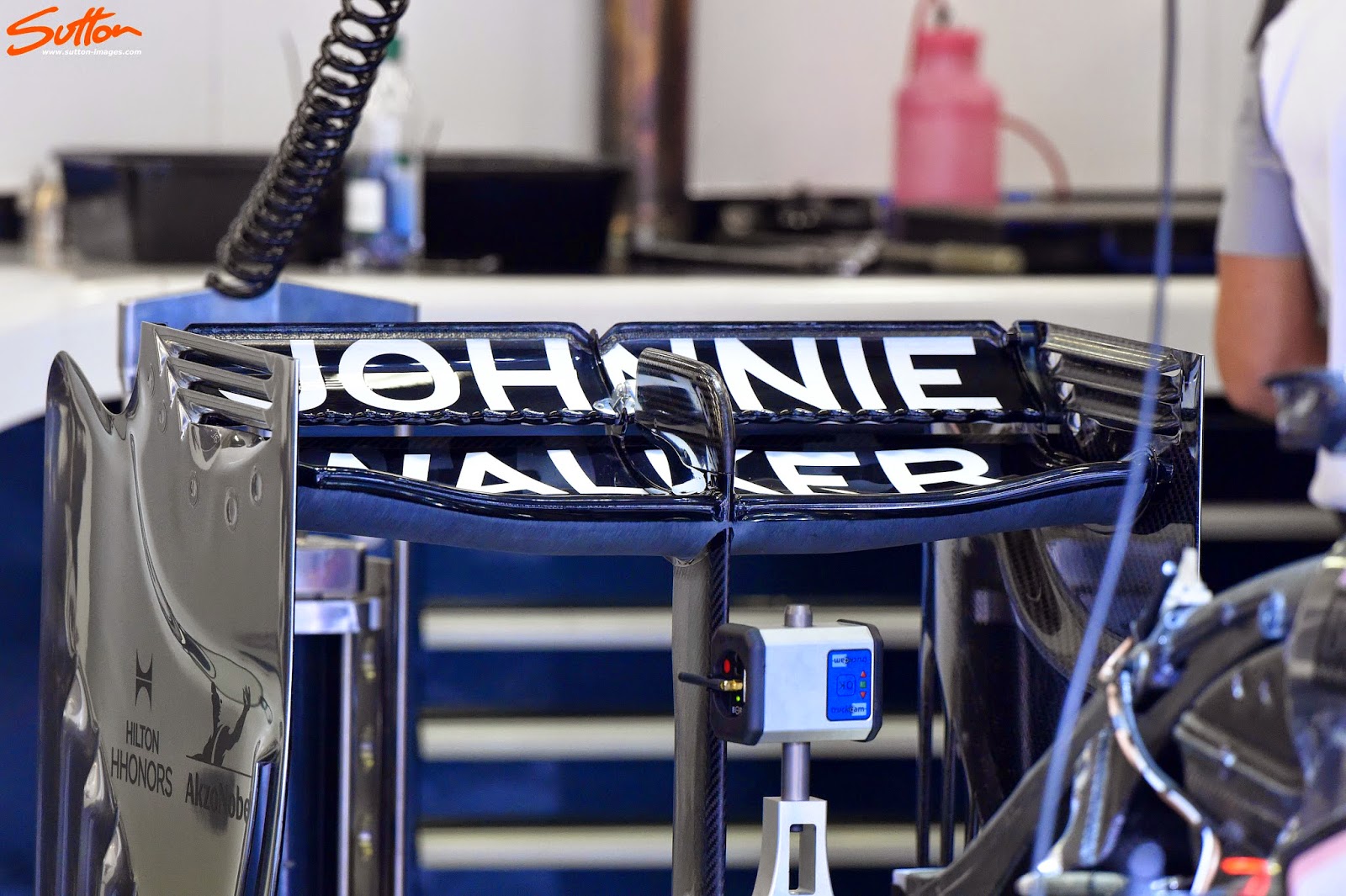
A Red Bull renaissance?
The dominance shown by Red Bull over the last 5 years appeared to be coming to an end with the rise of a new force: Mercedes. However I'm not sure the boys from Milton Keynes have read the 2014 script, or they've decided it's time to rip it up and write another.
Spa may well be earmarked as the turning point in the 2014 drivers championship not only for the warring Mercedes drivers but the emergence of Daniel Ricciardo as a real contender. Don't get me wrong he is still a real outside shot, but the battle between both Silver Arrows drivers could continue to open the door to the Australian.
It's fair to say that Red Bull still have by far the best chassis on the grid and that their performance has been offset by the mistakes made by Renault. That's also not to say that Mercedes haven't taken advantage of their 'works' scenario, making full use of the partnership to integrate the powerunit with the chassis. Both teams still remain at the top of their respective trees when we look at who the relative powerunit manufacturers supply and I'd suggest both were compromised by the loss of FRIC. Mercedes perhaps known to have the most mature version of the system but I'd suggest Red Bull were not all that far behind.
It was clear for everyone to see that a philosophy change had occurred at Red Bull in Spa with the team mixing it up, utilising the very skinny (low dowforce, low drag) rear wing. I've often remarked that the RB10 seems outwardly less complex than many of it's rivals, a trait shared by Williams this year. Now that's not to say they are not complex designs but that they are sparse when compared to their rivals, free of unnecessary components that look to create vortices or airflow structures to fix, mask or create other problems.
What also stood out to me was the teams marked improvement in terms of power availability, Spa should have been a track where Red Bull were 'found out', with a drop off in power along Kemmel straight being the most obvious sign of the power offset between the Mercedes and Renault powerunits. This is a clear sign to me that the hard work, re-structuring and investment done at Renault is starting to pay dividends. This should not simply been seen as an improvement from Renaults side however, with Red Bull doing their lions share to increase performance too, spending their own time and money investing in the changes. On top of this both have tasked Total (fuel and oils) with bringing their own expertise to the table, with fuel providing a crucial performance advantage, not only in terms of outright power but also due to the requirements of the fuel flow limit and race weight limit.
The most intriguing element in their renewed pace is that the team played their gear ratio joker in Spa, adjusting some of the 8 ratios the drivers can utilise this season. For those of you that aren't aware, from 2014 onwards the teams/drivers nominate their gear ratios at the start of the season. They are allowed to change this once, which must then be retained for the rest of the season. This shows (to me at least) that Red Bull, Renault and Total have found something, something that has required a change in their approach, with 1st, 2nd, 7th and 8th gear ratios being amended for longer ones to account for the performance being shifted.
We must also remember that generating more power from the ICE (through virtue of the R&D done by Total & Renault) you will change how energy is recovered and used with the MGU-H & K. I'd continue to suggest that the teams and manufacturers will continue to evolve in their approach to ERS as time goes by with circuit characteristics also playing a large role in how the energy is made available for the driver.
So why were Red Bull so far off in qualifying? I hear you say, well that's simple, they chose to lose downforce with the use of the skinny rear wing. This made them slower in the corners, which also lost them time on the straights, traction being a key issue with the Mercedes powerunit able to fill in the blanks that the Renault can not. Renault may well have made up ground but Mercedes have performance in reserve and I still find it interesting that they are the only team on the grid that chose not to use 8th gear. Don't get me wrong they have 8th gear (they've used it on the very odd occasion) but it is so tall that the performance drop off is vast when selected. This of course helps to spread the torque load and assists in the driveability of the car.
When all said and done the drivers championship is Nico Rosberg or Lewis Hamilton's to lose, however if they continue to squabble this only opens the door for a resurgent Red Bull and the ever consistent Daniel Ricciardo (Just imagine if he hadn't had those points took off him in Australia, or both Nico and Lewis had retired in Spa). The fight is well and truly still on....
Spa may well be earmarked as the turning point in the 2014 drivers championship not only for the warring Mercedes drivers but the emergence of Daniel Ricciardo as a real contender. Don't get me wrong he is still a real outside shot, but the battle between both Silver Arrows drivers could continue to open the door to the Australian.
It's fair to say that Red Bull still have by far the best chassis on the grid and that their performance has been offset by the mistakes made by Renault. That's also not to say that Mercedes haven't taken advantage of their 'works' scenario, making full use of the partnership to integrate the powerunit with the chassis. Both teams still remain at the top of their respective trees when we look at who the relative powerunit manufacturers supply and I'd suggest both were compromised by the loss of FRIC. Mercedes perhaps known to have the most mature version of the system but I'd suggest Red Bull were not all that far behind.
It was clear for everyone to see that a philosophy change had occurred at Red Bull in Spa with the team mixing it up, utilising the very skinny (low dowforce, low drag) rear wing. I've often remarked that the RB10 seems outwardly less complex than many of it's rivals, a trait shared by Williams this year. Now that's not to say they are not complex designs but that they are sparse when compared to their rivals, free of unnecessary components that look to create vortices or airflow structures to fix, mask or create other problems.
What also stood out to me was the teams marked improvement in terms of power availability, Spa should have been a track where Red Bull were 'found out', with a drop off in power along Kemmel straight being the most obvious sign of the power offset between the Mercedes and Renault powerunits. This is a clear sign to me that the hard work, re-structuring and investment done at Renault is starting to pay dividends. This should not simply been seen as an improvement from Renaults side however, with Red Bull doing their lions share to increase performance too, spending their own time and money investing in the changes. On top of this both have tasked Total (fuel and oils) with bringing their own expertise to the table, with fuel providing a crucial performance advantage, not only in terms of outright power but also due to the requirements of the fuel flow limit and race weight limit.
The most intriguing element in their renewed pace is that the team played their gear ratio joker in Spa, adjusting some of the 8 ratios the drivers can utilise this season. For those of you that aren't aware, from 2014 onwards the teams/drivers nominate their gear ratios at the start of the season. They are allowed to change this once, which must then be retained for the rest of the season. This shows (to me at least) that Red Bull, Renault and Total have found something, something that has required a change in their approach, with 1st, 2nd, 7th and 8th gear ratios being amended for longer ones to account for the performance being shifted.
We must also remember that generating more power from the ICE (through virtue of the R&D done by Total & Renault) you will change how energy is recovered and used with the MGU-H & K. I'd continue to suggest that the teams and manufacturers will continue to evolve in their approach to ERS as time goes by with circuit characteristics also playing a large role in how the energy is made available for the driver.
So why were Red Bull so far off in qualifying? I hear you say, well that's simple, they chose to lose downforce with the use of the skinny rear wing. This made them slower in the corners, which also lost them time on the straights, traction being a key issue with the Mercedes powerunit able to fill in the blanks that the Renault can not. Renault may well have made up ground but Mercedes have performance in reserve and I still find it interesting that they are the only team on the grid that chose not to use 8th gear. Don't get me wrong they have 8th gear (they've used it on the very odd occasion) but it is so tall that the performance drop off is vast when selected. This of course helps to spread the torque load and assists in the driveability of the car.
When all said and done the drivers championship is Nico Rosberg or Lewis Hamilton's to lose, however if they continue to squabble this only opens the door for a resurgent Red Bull and the ever consistent Daniel Ricciardo (Just imagine if he hadn't had those points took off him in Australia, or both Nico and Lewis had retired in Spa). The fight is well and truly still on....

.png)


















.jpg)
.jpg)




















































